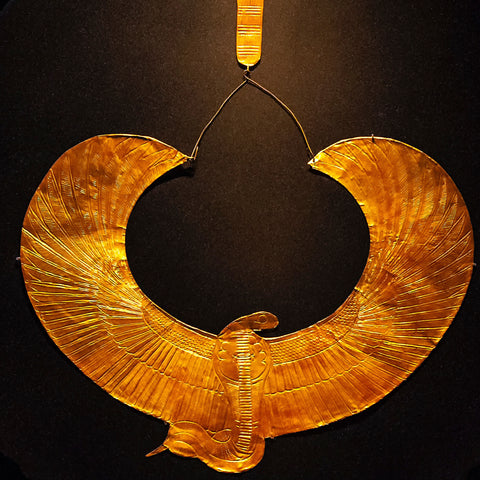The History & Origin of Jewelry
For as long as humans have walked the earth, jewelry has played an important part in our lives. From it being used to signify status to it being handed down through the generations as family heirlooms, there’s a reverence for jewelry that goes well beyond most material objects.
But where did it all begin? Join us as we go back in time to uncover the history of jewelry.

The Origin of Jewelry Can Be Traced Back to… Sea Snails?
Jewelry is one of the oldest types of artifacts discovered by archeologists with the oldest variation being 100,000-year-old beads that were found in Israel and Algeria in 2006. The beads were made from the shells of a species of ocean gastropod, or sea snail, known as Nassarius gibbosulus. According to researchers, the beads held significant cultural value and thus, weren’t used as personal adornments as much as they were used for trade and revenue among these ancient cultures.

Wearing Jewelry Dates Back to the Cro-Magnons
While beads have been around for over 100,000 years, they were mainly used as currency. The actual wearing of jewelry is believed to have started with the Cro-Magnons, the ancestors of Homo sapiens. The Cro-Magnons fashioned wearable jewelry out of bone, teeth, and stone, using animal sinew to create crude necklaces and bracelets. Their jewelry remains a testament to the fact that when Cro-Magnons killed an animal for food, no part of it was left unused, not even the bones.

The Foundations of Modern Jewelry
It wasn’t until the Ancient Egyptians started using gold in their jewelry that precious metals became common in jewelry making. The Egyptians were enamored by gold’s brilliant shine and easy workability. The fact that it was also rare made it an especially attractive material that was not only worn for its beauty, but also to symbolize status and power. The Egyptians so loved their gold jewelry that it stayed with them throughout their lives and even, after death.
The Mesopotamians are considered to be the first people to inlay brightly colored stones and gems in their metal jewelry. They specialized in making jewelry for both humans and statues in the shape of leaves, cones, and spirals, and they used stones like agate, carnelian, jasper, and lapis in many of their designs. Not long after, jewelry makers in the Byzantine Empire would start introducing the first working clasps in their jewelry. Men of this era would also be among the first to start wearing what is now known as the signet ring.
Meanwhile, in Rome, the brooch became an important piece of jewelry both culturally and for practicality purposes. Brooches were most commonly used to secure their flowing clothes together and depending on one’s wealth, would often be adorned with precious stones like diamonds, sapphires, emeralds, and pearls, which were brought to Rome by Alexander the Great during his many conquests.

Our Love for Jewelry is Timeless
For over 100,000 years, jewelry has served many functions. From being used as currency to signifying status to warding off evil, jewelry has always carried a high asset value and that remains today. At Lori Weitzner, we take the cultural significance of jewelry very seriously. That’s why we strive to honor the history of jewelry by using only the highest quality materials and employing traditional embroidery, beading, and sewing techniques to create truly inspired and one-of-a-kind works of wearable art. Find your next piece of cherished jewelry at LoriWeitznerShop.com.



